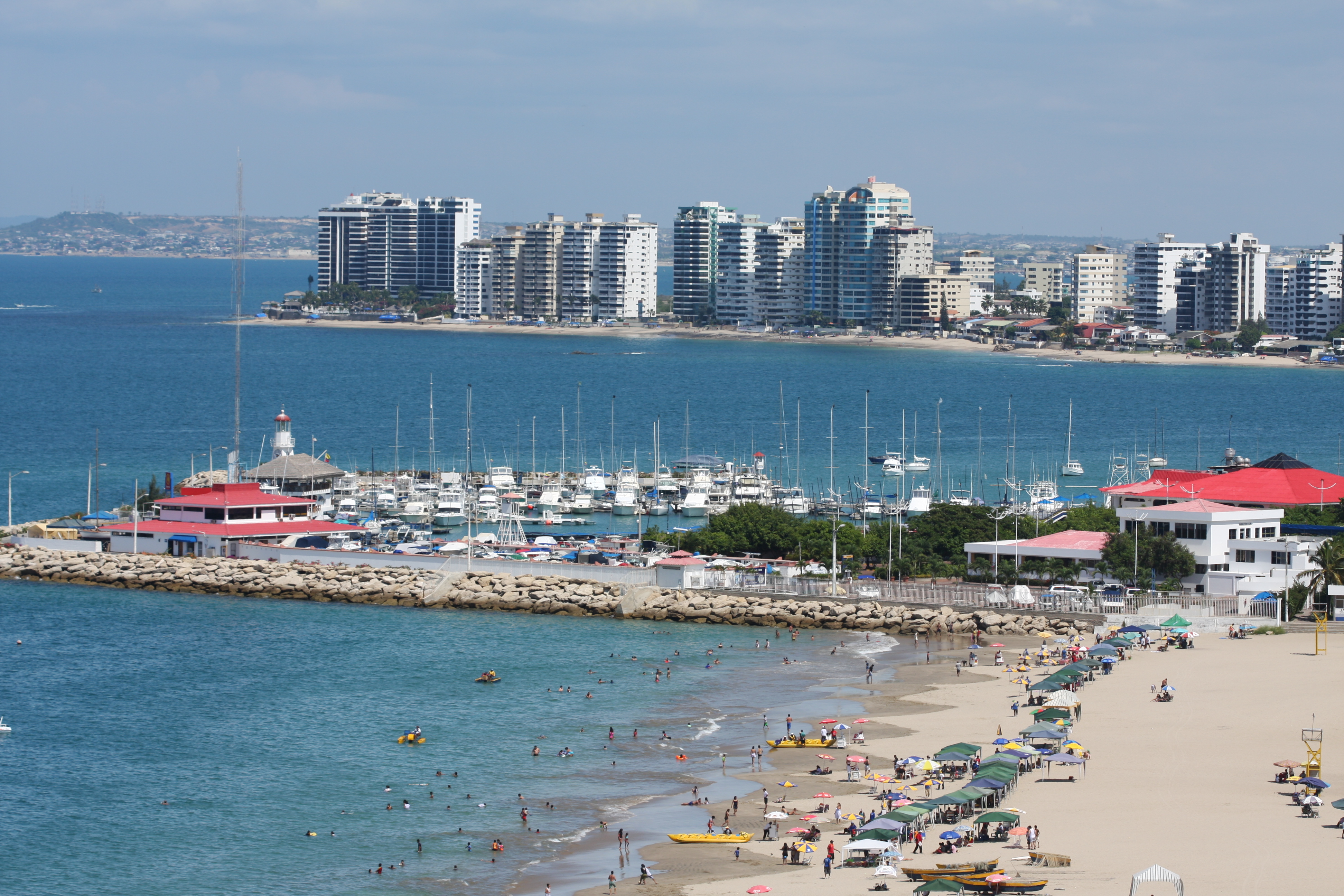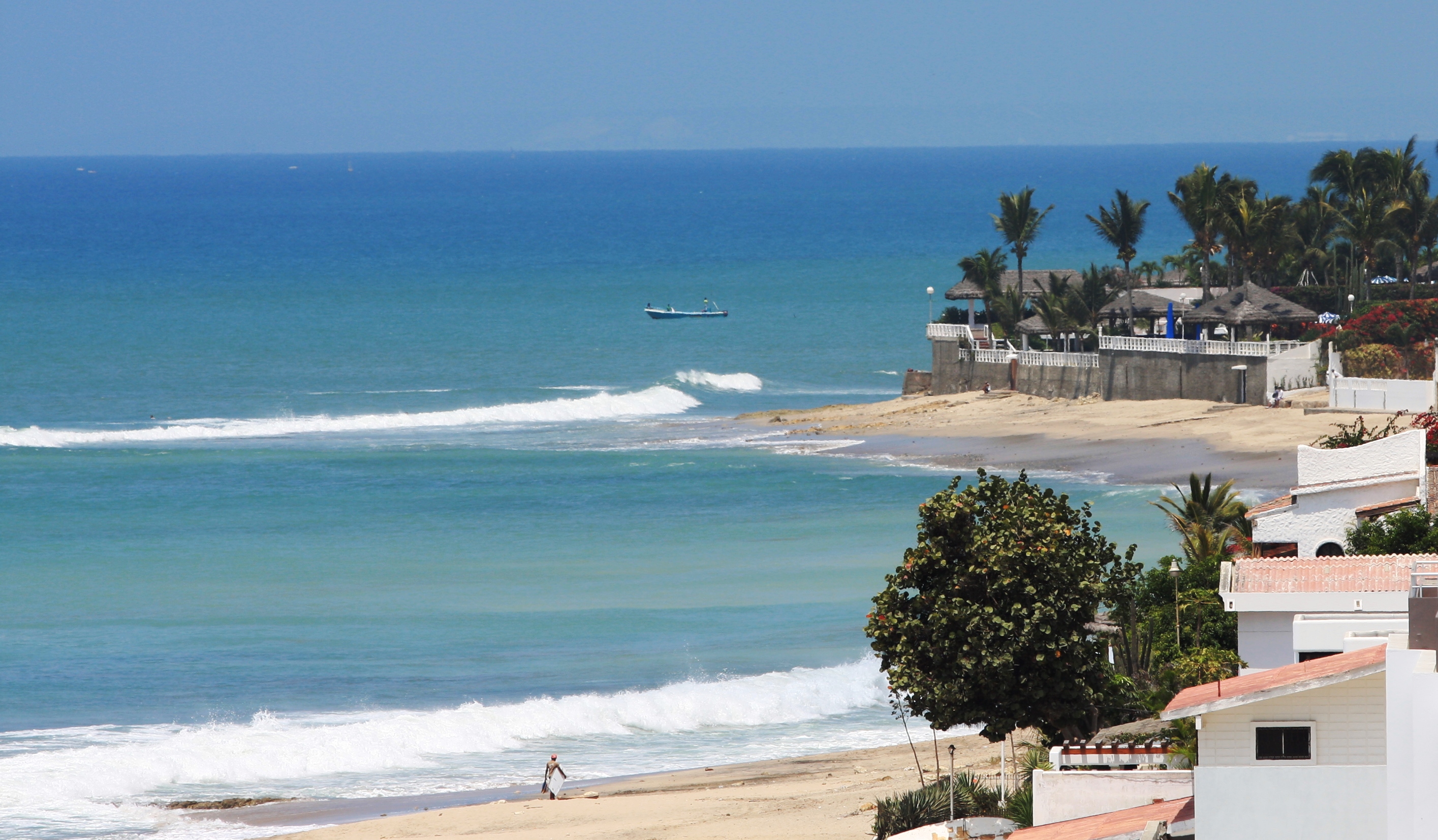Salinas, Ecuador on:
[Wikipedia]
[Google]
[Amazon]
Salinas is a coastal 


 * Central Church of Our Lady of Mercy
* Main Salinas Malecon and Chipipe
* San Lorenzo Park Civic
* Paseo Artesanal Los Cedros
* Malecón de Santa Rosa
* Park and Central Church of José Luis Tamayo
* Pacific Mall
* Anconcito Malecon
* Whale Museum
* Whale watching
* Parasailing
* General Ulpiano Paez Airport
* Central Church of Our Lady of Mercy
* Main Salinas Malecon and Chipipe
* San Lorenzo Park Civic
* Paseo Artesanal Los Cedros
* Malecón de Santa Rosa
* Park and Central Church of José Luis Tamayo
* Pacific Mall
* Anconcito Malecon
* Whale Museum
* Whale watching
* Parasailing
* General Ulpiano Paez Airport
www.inec.gov.ec
Taxi Salinas Guayaquil
Transportation Salinas Guayaquil. ;Specific {{Authority control Populated places in Santa Elena Province Surfing locations in Ecuador
city
A city is a human settlement of a substantial size. The term "city" has different meanings around the world and in some places the settlement can be very small. Even where the term is limited to larger settlements, there is no universally agree ...
located in the Province of Santa Elena, Ecuador
Ecuador, officially the Republic of Ecuador, is a country in northwestern South America, bordered by Colombia on the north, Peru on the east and south, and the Pacific Ocean on the west. It also includes the Galápagos Province which contain ...
. It is the seat of the canton that bears its name. The west
West is one of the four cardinal directions or points of the compass. It is the opposite direction from east and is the direction in which the Sun sets on the Earth.
Etymology
The word "west" is a Germanic word passed into some Romance langu ...
ernmost city on mainland Ecuador, Salinas is an important tourist
Tourism is travel for pleasure, and the commercial activity of providing and supporting such travel. UN Tourism defines tourism more generally, in terms which go "beyond the common perception of tourism as being limited to holiday activity on ...
center. Salinas, Ecuador's largest coastal resort, offers one of the country's best real estate investment markets and most popular and most upscale beach lifestyle. It was the site of the ISA World Junior Surfing Games Ecuador in 2009. There are two major yacht clubs in Salinas, the first is Salinas Yacht Club, which is smaller than the Puerto Lucia Yacht Club, in Santa Elena, in an area known as 'La Libertad' which, in Spanish means 'The Freedom Town'. Puerto Lucia boasts a hotel, several restaurants, a private beach and apartment buildings, as well as the large marina and port.
It was a small fishing village until June 30, 1929, when it was established as the rural parish of Santa Elena. On December 22, 1937, an official decree was signed by the Commander in Chief, General Alberto Enriquez Gallo and published in Official Gazette No. 52 of December 27 of that year, that elevated the parish to the rank of canton. Its cantonal head is the town of Salinas, and is composed of the rural parishes Ancon, and Jose Luis Tamayo Anconcito (Muey).

Political division
Salinas is divided into four urban parishes. They are: *Alberto Enriquez Gallo *Carlos Espinoza Larrea *Santa Rosa *Vicente Rocafuerte

Economy and attractions
Salinas Museum 21st Century
The museum is located in Salinas Guayas, Malecon and Quil streets and is known as "The Museum of the Great Peninsula". It has an archaeological room, a temporary exhibition hall, a lounge, and a naval parade. The Archaeological room has a complete sample of the cultures that settled in this large peninsula. Represented are the Valdivia culture (3500 - 1500 BC), theMachalilla culture
The Machalilla were a prehistory, prehistoric people in Ecuador, in southern Manabí Province, Manabí and the Santa Elena Peninsula. The dates when the culture thrived are uncertain, but are generally agreed to encompass 1500 common era, BCE to ...
(1500 - 1100 BC), and the later ''Engoroy'' variant of the Chorrera culture. Also the Jambelí Guangala Regional Development period (500 BC - 500), and maintenance-Integration Guancavilca period (500-1530) are represented. The finds shown include human and animal figurines, ceremonial and utilitarian vessels, bottles, whistles, stone axes, beads and necklaces made of Spondylus shells, horns, and a variety of both cylindrical and flat seals.
On displays is a model of a raft - Guancavilca Manteña - reproduced according to the description of Samano 1526. The Guancavilcas large rafts were in their black-colored vessels, hands and stone metate for grinding grains, spherical stone weights for nets and pointed to the divers who were also used to hit and release Spondylus shells attached to rocks; copper objects such as axes and hatchets handle coins and Spondylus shell accounts, circular and rectangular shapes that were marketed along with the copper material, in Mexico and Peru, are evidence of the last thousand years of navigation our country.
A model that reproduces the galleon Jesus Maria de la Limpia Concepcion known as "The Captain" takes us back to colonial times and the exhibit showcases the salvage in that galleon wrecked in 1654 off the coast of Chanduy.
Coins of 1, 2, 4 and 8 reales (cobs or crushed calls)? were made in silver and transported on ships to Panama and from there to the Caribbean to be transported to Europe, fragments of silver cutlery and plates and pottery is known as majolica bars, tin, silver, cannonballs both bronze, and iron and lead for muskets.
A gold cross with Latin inscriptions, an earring with pearl bases, burner and silver candelabra, a buckle, metal earrings agate and correspond to the material used for personal use by the passengers on this ship that ran aground off the coast of the town of El Real.
Punta Carnero Beach
People travel from all over the world because the surfing in Ecuador offers an ideal climate all year round. Punta Carnero is a beach located approximately ten minutes south of Salinas. Its name, "Ram Point" in English, stems from the rocky headland located at the southeast end of the beach. Punta Carnero Beach has been chosen many times to be the venue of not just national surf competitions, but also at an international level. The beach extends for approximately and is relatively wide, with white to gray sand, medium waves and a prevalent inland breeze. Many who travel to Punta Carnero also visit other famous beaches which are found just off the coast of Ecuador by is known the world over, theGalápagos Islands
The Galápagos Islands () are an archipelago of volcanic islands in the Eastern Pacific, located around the equator, west of the mainland of South America. They form the Galápagos Province of the Republic of Ecuador, with a population of sli ...
an area of volcanic islands
Geologically, a volcanic island is an island of volcano, volcanic origin. The term high island can be used to distinguish such islands from coral island, low islands, which are formed from sedimentation or the Tectonic uplift, uplifting of c ...
distributed around the equator
The equator is the circle of latitude that divides Earth into the Northern Hemisphere, Northern and Southern Hemisphere, Southern Hemispheres of Earth, hemispheres. It is an imaginary line located at 0 degrees latitude, about in circumferen ...
in the Pacific Ocean
The Pacific Ocean is the largest and deepest of Earth's five Borders of the oceans, oceanic divisions. It extends from the Arctic Ocean in the north to the Southern Ocean, or, depending on the definition, to Antarctica in the south, and is ...
.
Other attractions
Other attractions of popular activities include: * The diving on the island of Peel in Ayangue * Deep-sea fishing * La Chocolatera, a large cliff that is the most salient point of the Peninsula of Santa Elena where the north and south moving currents collide, giving the waters a rich brown color * Central Church of Our Lady of Mercy
* Main Salinas Malecon and Chipipe
* San Lorenzo Park Civic
* Paseo Artesanal Los Cedros
* Malecón de Santa Rosa
* Park and Central Church of José Luis Tamayo
* Pacific Mall
* Anconcito Malecon
* Whale Museum
* Whale watching
* Parasailing
* General Ulpiano Paez Airport
* Central Church of Our Lady of Mercy
* Main Salinas Malecon and Chipipe
* San Lorenzo Park Civic
* Paseo Artesanal Los Cedros
* Malecón de Santa Rosa
* Park and Central Church of José Luis Tamayo
* Pacific Mall
* Anconcito Malecon
* Whale Museum
* Whale watching
* Parasailing
* General Ulpiano Paez Airport
Geography
Climate
Salinas has a warm and dry hot arid climate (Köppen Köppen is a German surname. Notable people with the surname include:
* Bernd Köppen (1951–2014), German pianist and composer
* Carl Köppen (1833-1907), German military advisor in Meiji era Japan
* Edlef Köppen (1893–1939), German author ...
''BWh''). Although the city is located in a tropical zone near the Equator, the weather closely resembles a subtropical
The subtropical zones or subtropics are geographical zone, geographical and Köppen climate classification, climate zones immediately to the Northern Hemisphere, north and Southern Hemisphere, south of the tropics. Geographically part of the Ge ...
climate, being very warm and dry rather than hot, humid, and rainy. This is due to the Humboldt Current
The Humboldt Current, also called the Peru Current, is a cold, low-salinity ocean current that flows north along the western coast of South America.Montecino, Vivian, and Carina B. Lange. "The Humboldt Current System: Ecosystem components and pro ...
, which lower temperatures for most of the year, except in the southern summer months, when the temperature rises.
References
www.inec.gov.ec
Taxi Salinas Guayaquil
Transportation Salinas Guayaquil. ;Specific {{Authority control Populated places in Santa Elena Province Surfing locations in Ecuador